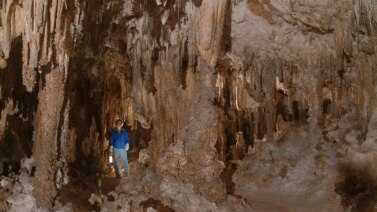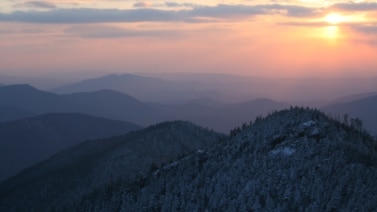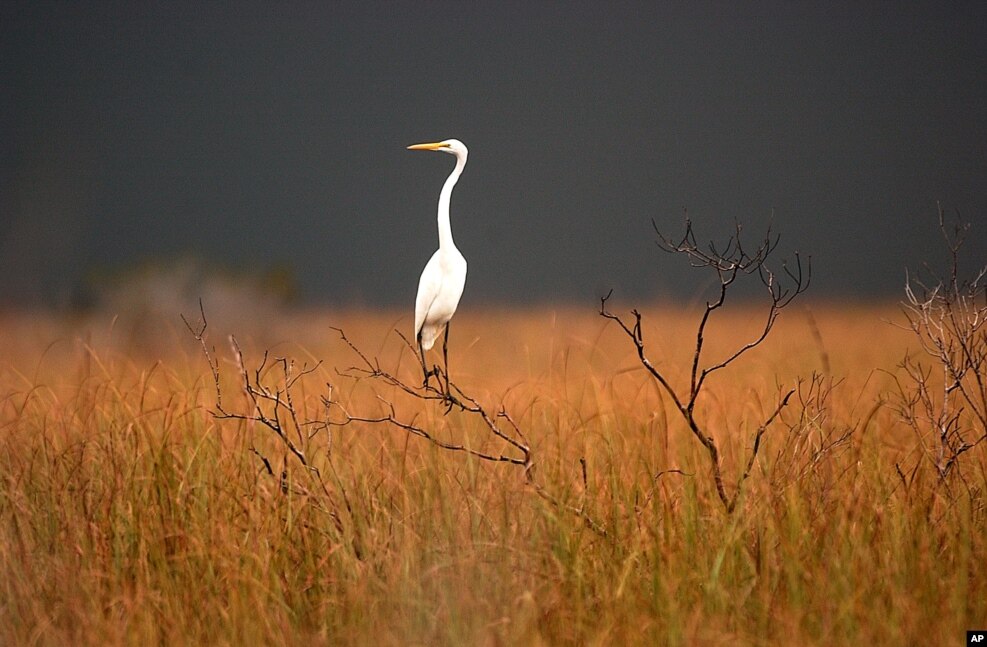
Today on our national parks journey, we explore the Everglades in South Florida.
When many people think of Florida, images of sandy coasts, theme parks and rocket launches come to mind. But it is also home to a natural wilderness different from any other in the United States.
Everglades National Park is the largest subtropical wilderness in the U.S. Several rare and endangered species live in the park. It is a huge place, covering more than 600,000 hectares of wetlands.
It is also a popular park. More than 1 million visitors pass through the official entrances every year. But, others enter the park on water and go uncounted.
Irreplaceable nature
In 1947, President Harry Truman spoke at the official opening of Everglades National Park. He said the goal of creating the park was to protect forever a wild area that could never be replaced.
The Everglades is considered one of the biological wonders of the world. It is a place where plants and animals from the Caribbean Sea share an ecosystem with native North American species.
Nine different environments exist within the Everglades. They include mangrove and cypress swamps, estuaries and coastal marshes.
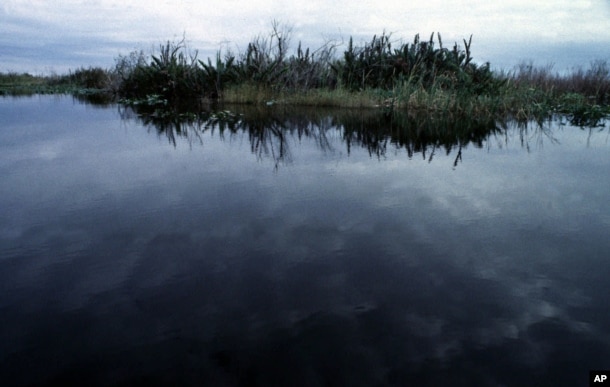
River of grass
In the 1940s, reporter and environmentalist Marjory Stoneman Douglas wrote a book called, “The Everglades: River of Grass.” She described the area as, “the liquid heart of Florida.”
Everglades National Park was created to protect an ecosystem from damage. The Everglades is home to about 30 species that federal officials say are threatened or endangered. They include the Florida panther, the American crocodile and the West Indian manatee.
More than 350 bird species and 300 species of fresh and saltwater fish live within the park. The Everglades is also home to 40 species of mammals and 50 reptile species.
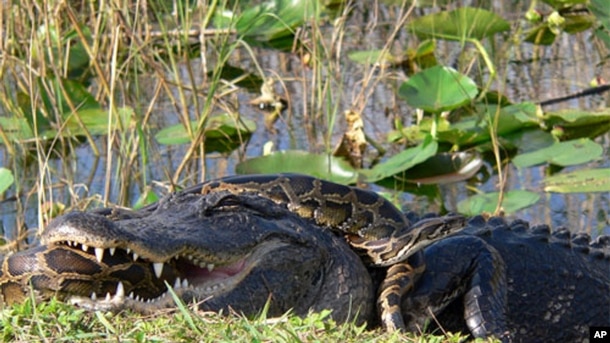
Unique flora
Visitors to the Everglades will see many exotic plants. They include what is said to be the largest growth of mangrove trees in the Western world. Gumbo-limbo trees, known for their peeling red skin, strangler figs and royal palms are also among the area's plant life. The country's largest living mahogany tree also lives in the Everglades.
Sawgrass grows in some areas of the park. Be careful - sawgrass is very sharp, with teeth just like a saw. It can grow up to 4 meters tall.
With about one and one-half meters of rainfall each year, plants and trees never stop growing in the Everglades.
The dry, winter season is the favorite of most visitors, when insects like mosquitoes are less of a problem. The rainy season lasts from June to November.
Hiking, biking and boating
There are many ways to explore the Everglades. Visitors can see alligators while hiking the Anhinga Trail. The park is one of the only places in the world where freshwater alligators and saltwater crocodiles live in the same area.
Visitors using canoes are likely to observe large groups of wading birds like the wood stork or the great blue heron. Bright pink flamingos also thrive in the Everglades.
Some visitors might enjoy riding bicycles through Shark Valley. Others might want to take it more slowly. The boardwalk walking trail goes right over the slow-moving water. Visitors can take a close look at insects and other wildlife.
The park also offers tram rides for guided tours.
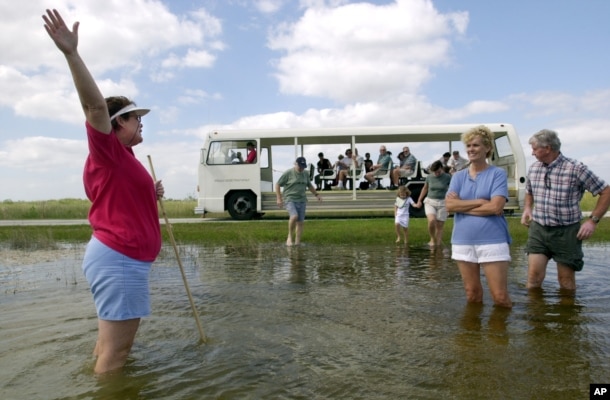
Dark history
The National Park Service says that early Colonial settlers and land developers believed the Everglades had little value. The settlers had plans to remove water from the area. In the 1880s, developers began digging canals to reduce water levels.
At the time, they did not understand the complexity of the Everglades' ecosystem. As a result, they were not prepared for all the work. They caused environmental problems.
Larger efforts to drain the wetlands continued between 1905 and 1910. Farms were built on large pieces of land. More people began to move to the Everglades.
More changes came midcentury. The federal government built roads, canals and water-control systems throughout South Florida.
The project was aimed at providing water and flood protection for people and farms. Workers built a huge system of waterways and pumping stations to control the overflow of Lake Okeechobee, north of the Everglades.
The Everglades today and tomorrow
In more recent years, environmental experts learned about the damage to the Everglades. Some experts say the balance of nature in the area has been destroyed.
Today, some of South Florida's early wetland areas no longer exist. Populations of wading birds have been reduced by 90 percent. Whole populations of animals are in danger of disappearing.
In 2000, Congress approved a plan to restore and improve the Everglades. Federal, state and other organizations are partners in the Comprehensive Everglades Restoration Plan.
The future is not clear for the wild and beautiful Everglades. But, efforts are under way to protect this biological treasure. The hope is that people may continue to visit the extraordinary Everglades National Park long into the future.
I'm Caty Weaver.
And I'm Anne Ball.
Jerilyn Watson wrote this report for Learning English. Caty Weaver was the editor.
Have you been to the Everglades? Would you like to? Please leave a Comment, and post on our Facebook page, thanks!
Words in This Story
subtropical - adj. an area close to tropical parts of the world
ecosystem - n. everything that exists in a particular environment
swamp - n. land that is always wet and often partly covered with water
estuary - n. where a river flows into the sea
marsh - n. soft, wet land that has many grasses and other plants
exotic - adj. very different, strange, or unusual
comprehensive - n. including many, most, or all things
restoration - n. bringing back something that existed before

